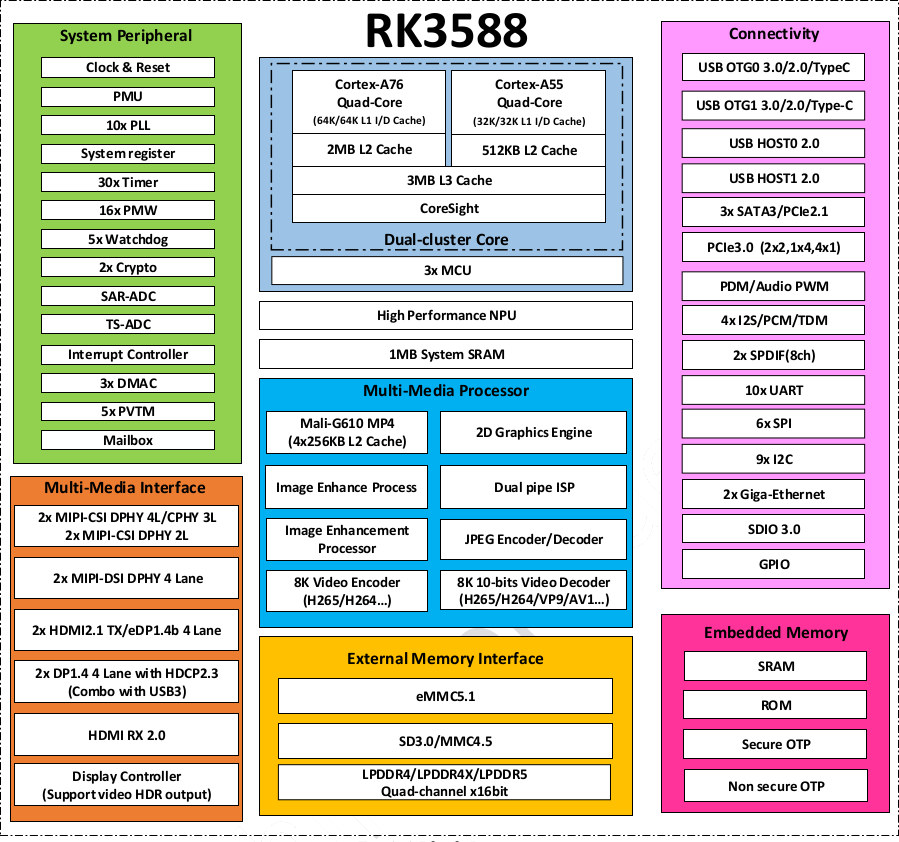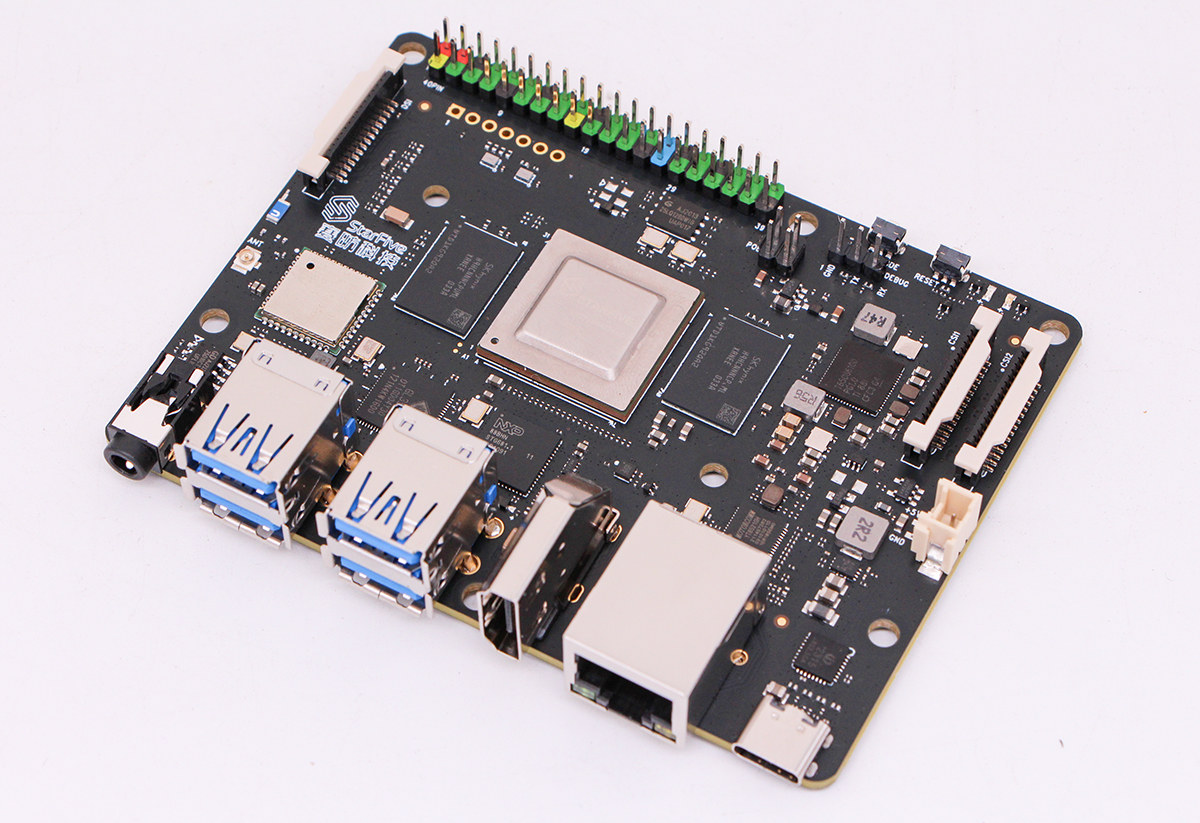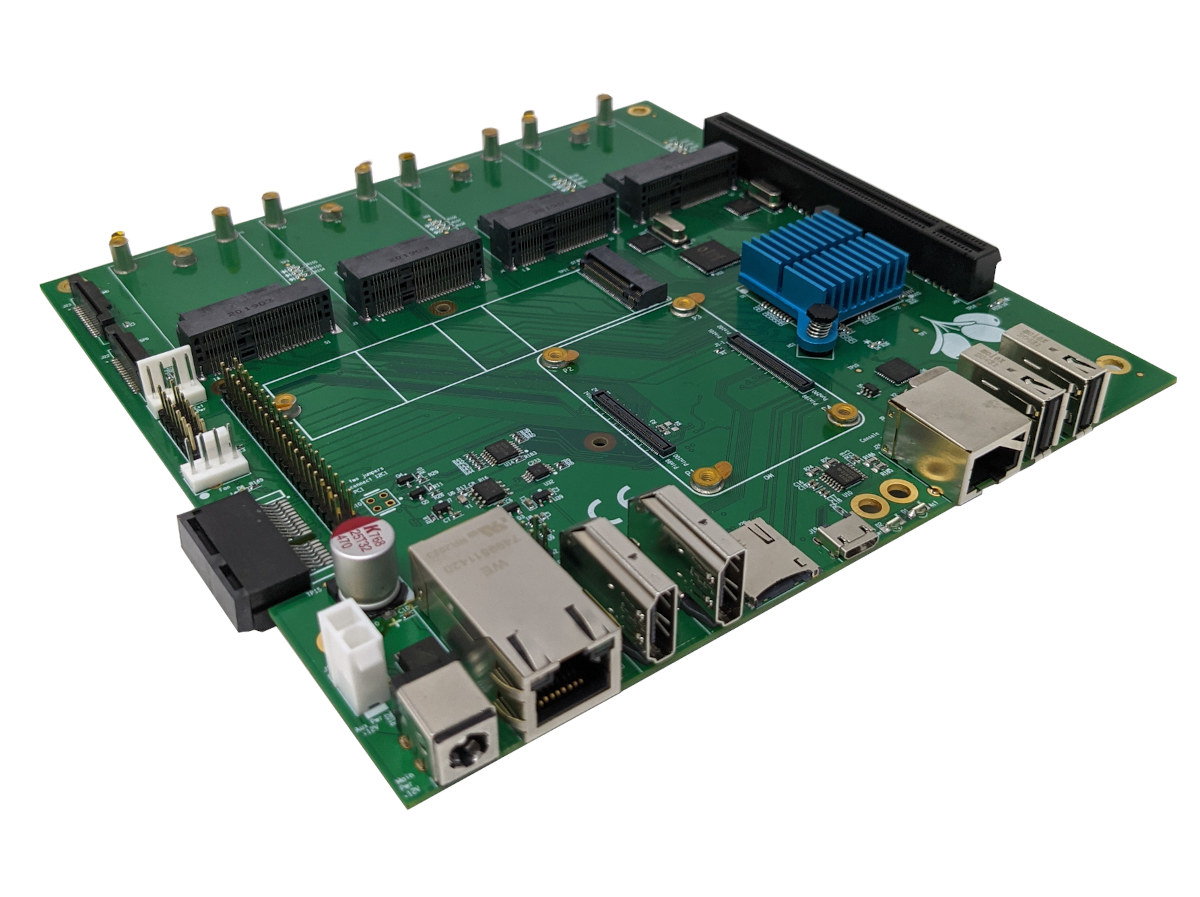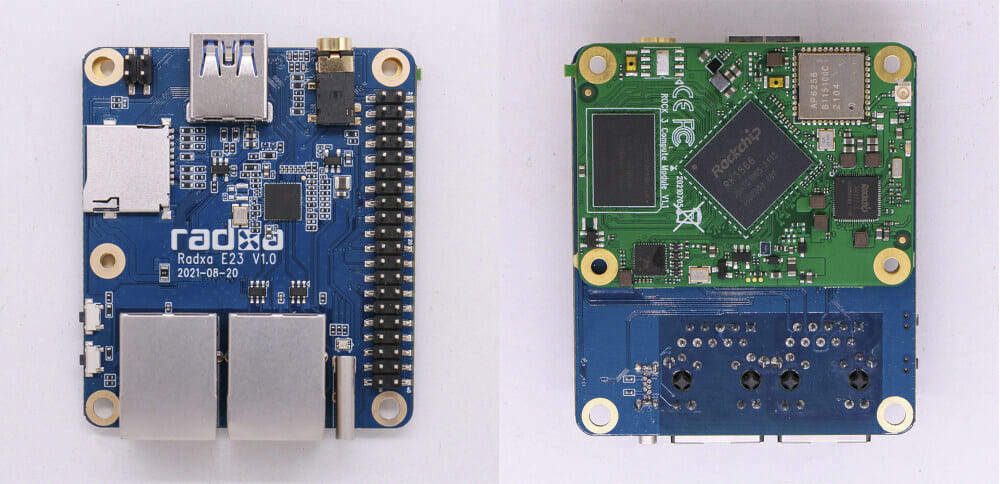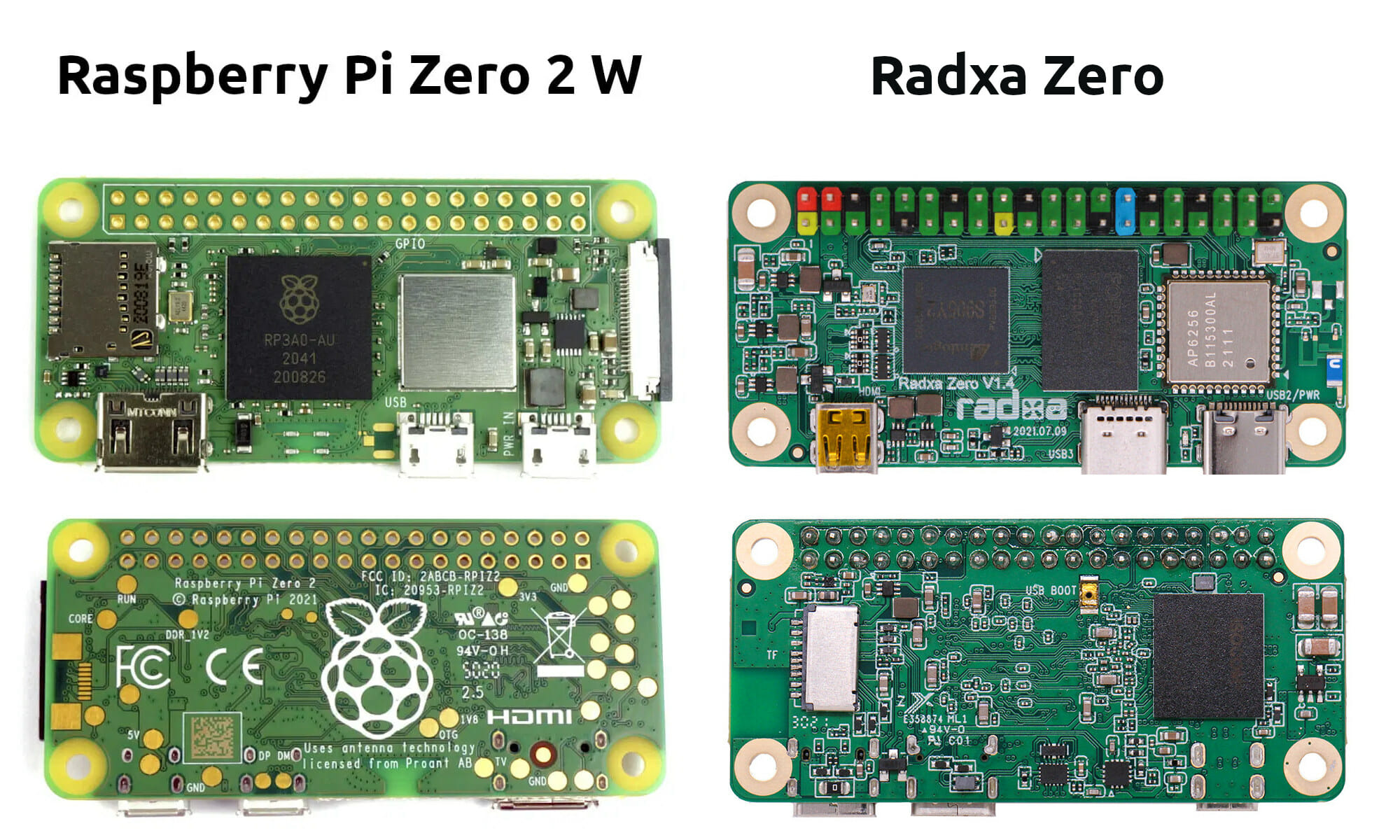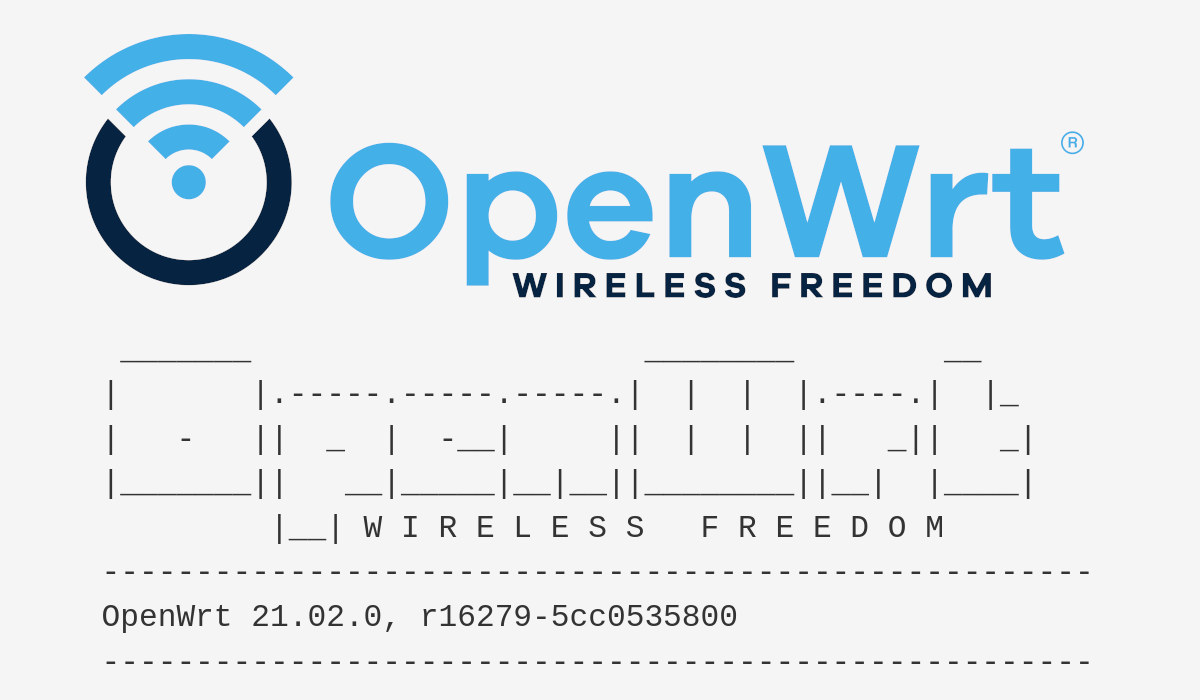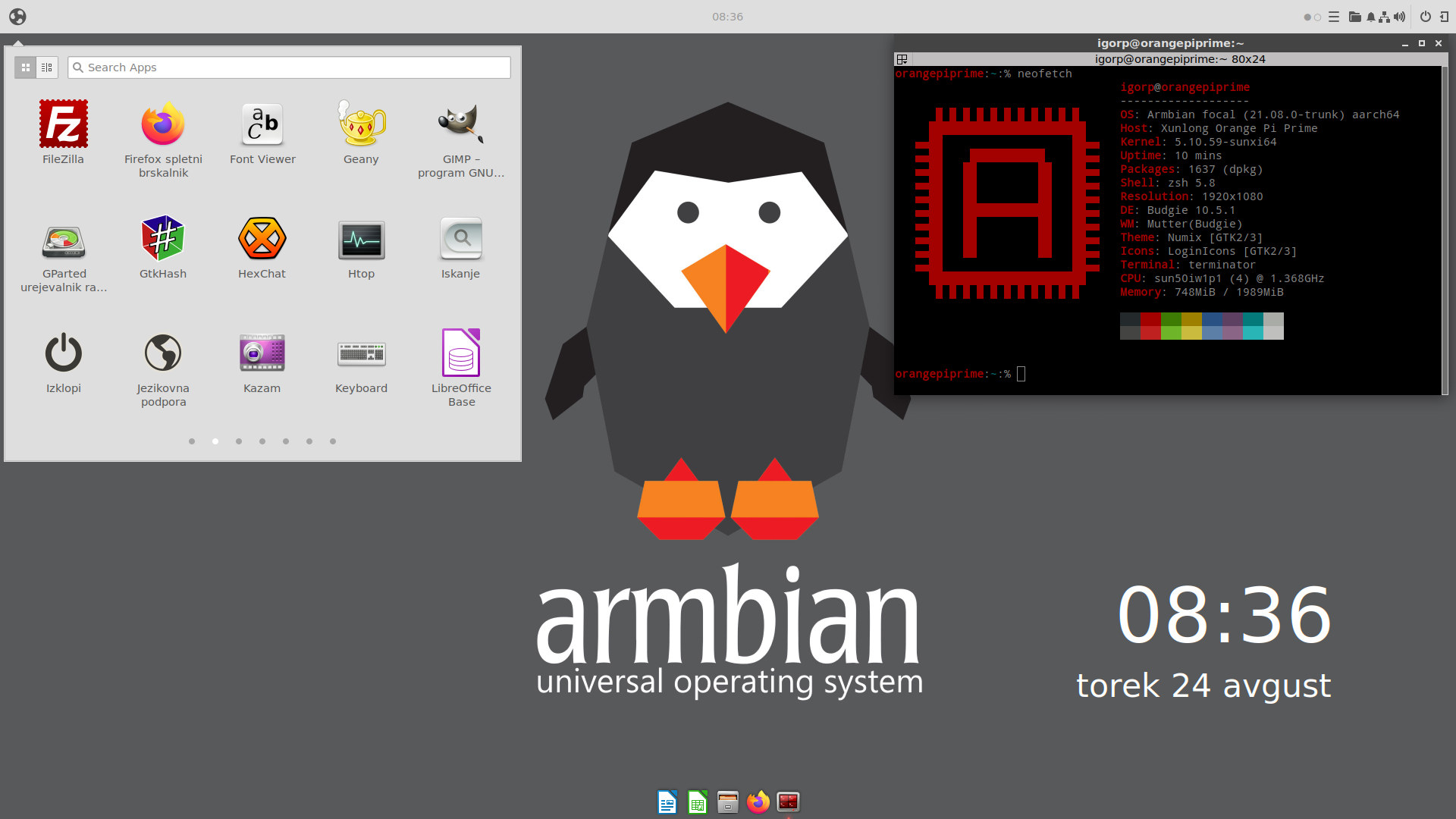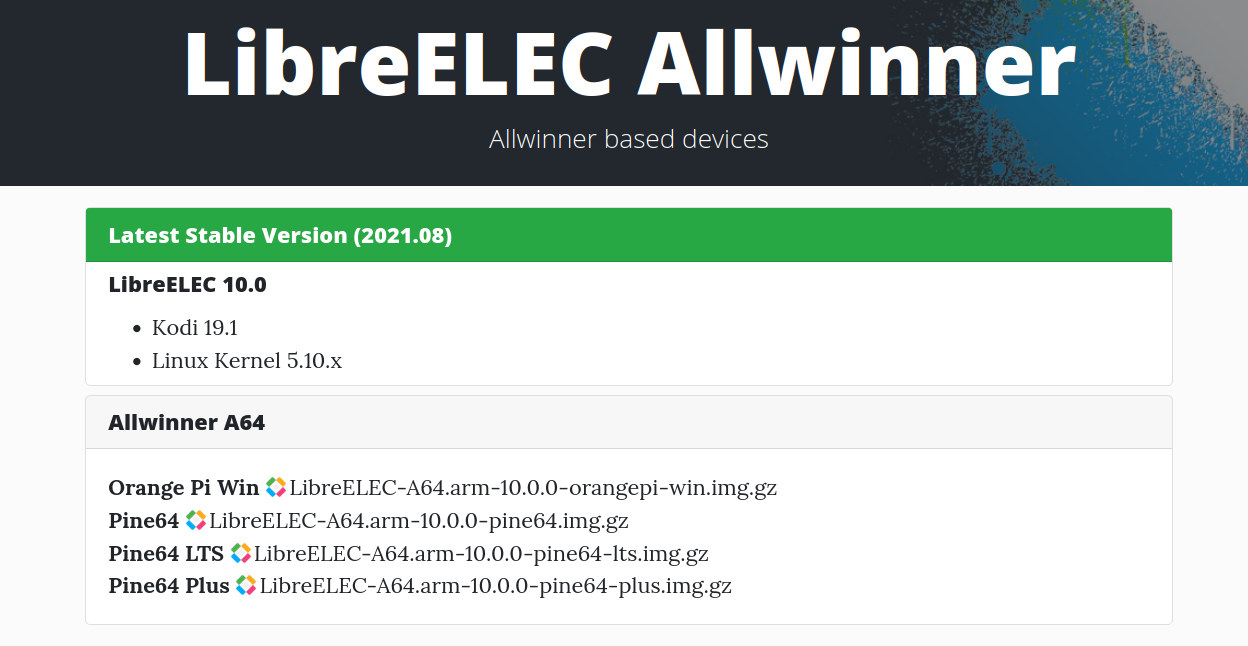We had most Rockchip RK3588 specifications so far for the long-awaited Cortex-A76/Cortex-A55 processor, but at today’s Rockchip Developer Conference 2021, more information surfaces with impressive CPU and GPU benchmarks, and the Rockchip RK3588 datasheet has just dropped from the sky directly into my laptop, as such document usually does. At least two single board computers are expected to soon follow from Radxa and Pine64. Rockchip RK3588 datasheet Since we have the datasheet, we can confirm some of the specifications of RK3588, and get additional details: CPU – 4x Cortex-A76 @ up to 2.4/2.6 GHz and 4x Cortex-A55 cores @ 1.8 GHz in dynamIQ configuration GPU Arm Mali-G610 MP4 “Odin” GPU with support for OpenGLES 1.1, 2.0, and 3.2, OpenCL up to 2.2 and Vulkan1.2 2D graphics engine up to 8192×8192 source, 4096×4096 destination AI Accelerator – 6 TOPS NPU 3.0 (Neural Processing Unit) VPU Video decoding 8Kp60 H.265, VP9, AVS2, […]
VisionFive V1 RISC-V Linux SBC resurrects BeagleV StarFive single board computer
Last summer we reported that BeagleV StarFive RISC-V SBC would not be manufactured, but all was not lost as StarFive would collaborate with Radxa to make a new single board computer based on their JH7100 dual-core 64-bit RISC-V processor. But thanks to a report on Heise and extra photos acquired by CNX Software, we now have more details about the board that mostly comes with the same features as the BeagleV StarFive, but a completely different layout that brings all the main ports to one side of the board. VisionFive V1 specifications: SoC – StarFive JH7100 Vision SoC with: Dual-core Sifive U74 RISC-V processor @ 1.5 GHz with 2MB L2 cache Vision DSP Tensilica-VP6 for computing vision NVDLA Engine 1 core (configuration 2048 MACs @ 800MHz – 3.5 TOPS) Neural Network Engine (1024MACs @ 500MHz – 1 TOPS) VPU – H.264/H.265 decoder up to 4Kp60, dual-stream decoding up to 4Kp30 […]
Seaberry Mini-ITX carrier board for Raspberry Pi CM4 exposes 11 PCIe slots and sockets
The Raspberry Pi CM4 may only have a one PCIe x1 Gen 2 interface, but this has not stopped ALFTEL from designing Seaberry, a mini-ITX carrier board for the Raspberry Pi Compute Module 4 with eleven slots and sockets making use of the single 5 Gbps PCIe Gen 2 interface. The board also offers two SATA ports, one Gigabit Ethernet port, one RJ45 console port, two HDMI ports, a micro SD card slot, two USB 2.0 ports, as well as the usual 40-pin GPIO expansion header, besides the PCIe x16 slot, a PCIe x1 side slot, and M.2 and mPCIe sockets. Seaberry carrier board specifications: Compatible systems-on-module Raspberry Pi CM4 module (Regular or Lite) Radxa CM3 Pine64 SoQuartz Storage – 1x MicroSD card for Raspberry Pi CM4 Lite, 1x M.2 socket for NVMe SSD (See PCIe expansion section) Video Output – 2x HDMI output ports, 1x MIPI DSI connector Camera […]
Radxa CM3 – A drop-in Raspberry Pi CM4 alternative
Radxa CM3 is a system-on-module that offers an alternative to the Raspberry Pi CM4, with the same form factor allowing it to become a drop-in replacement, but switching from a Broadcom BCM2711 processor to a Rockchip RK3566 quad-core Cortex-A55 SoC. Radxa CM3 will work with existing carrier boards for the Raspberry Pi Compute Module 4, albeit some features such as dual HDMI are not available, instead, providing a single HDMI, but the module also offers extra features through an additional 100-pin board-to-board with interfaces such as SATA III and USB 3.0. Let’s compare Radxa CM3 specifications to the ones of Raspberry Pi CM4. Comparing Broadcom BCM2711 quad-core processor and Rockchip RK3566, as the Cortex-A72 may still be faster on some workloads despite the lower frequency, and some other workloads may be dramatically faster on RK3566, for example for those using Armv8 Crypto extensions missing on all Raspberry Pi, which we […]
Raspberry Pi Zero 2 W vs Radxa Zero – Features and benchmarks comparison
The just-announced Raspberry Pi Zero 2 W is not the first quad-core Arm SBC following Raspberry Pi Zero form factor, and back in 2017, the Banana Pi BPI-M2 Zero was introduced for $15, and the Radxa Zero was unveiled last June with an Amlogic S905Y2 SoC with price starting at $15 as well. With its Allwinner H2+ quad-core Cortex-A7 processor clocked at 1 GHz and a price bumped up to $23, the Banana Pi M2 Zero has mostly become irrelevant, but the Radxa Zero may still be considered by some people with a 1.8 GHz processor, and options for up to 4GB RAM, so let’s see how features compare against Raspberry Pi Zero 2 W, followed by some benchmark numbers. Raspberry Pi Zero 2 W vs Raxda Zero – Features If we just look at the comparison table, the Radxa Zero is equivalent or superior in almost every way, except […]
OpenWrt 21.02 released with WPA3, HTTPS, TLS enabled by default
OpenWrt 21.02 has just been released with higher security with WPA3, HTTPS & TLS enabled by default, as well as initial support for the Distributed Switch Architecture (DSA), the Linux standard for configurable Ethernet switches. OpenWrt is the most popular open-source Linux distribution for routers and entry-level Linux-capable embedded systems, and the latest release includes over 5800 commits since the release of OpenWrt 19.07 in January 2020. WPA3 was already supported in OpenWrt 19.07, but not enabled by default, OpenWrt 20.02 changes that, together with TLS thanks to trusted CA certificates from Mozilla. That means LuCi interface, wget, opkg package manager can all support HTTPS out-of-the-box. Note that HTTPS redirection can be disabled for LuCI in the configuration files. Another security change is that SELinux is now supported by OpenWrt, but not enabled by default. OpenWrt 21.02’s DSA implementation replaces the current swconfig system, but not all targets have been […]
Armbian 21.08 for Arm boards ships with latest Linux 5.10 LTS
Armbian provides stable releases four times a year, and Armbian 21.08 has just been released offering minimal, server or XFCE, Cinnamon and Budgie desktop Linux 5.10 LTS images for Arm boards, as well as a build system to customize your own image. If you’ve been using an Arm SBC that is NOT a Raspberry Pi board, you’ve probably been told to use Armbian, as the community is providing Debian and Ubuntu images for over 100 Arm boards that are either “Supported”, “WIP” (suitable for testing), or “CSC” (no official support, aka you’re on your own). Armbian 21.08 highlights (Note: EDGE are daily builds following daily builds of the Linux kernel and fresh packages from Debian sid, Ubuntu 21.04 “hirsute” or Ubuntu 21.10 “impish” userland): Based on Linux 5.10.59 released on August 15, 2021 Minimal, server or XFCE, Cinnamon, and Budgie desktop Fast automated language selection on the first run Regular […]
LibreELEC 10.0 minimal Linux OS for media playback released with Kodi 19.1
While most TV boxes and SBCs nowadays ship with or support a version of Android, people who just want the best viewing experience may prefer to switch to a Linux distribution such as LibreELEC or CoreELEC. The good news is that LibreELEC 10.0 has just been released with Kodi 19.1 and Linux 5.10 LTS. LibreELEC 10.0 is said to work well for Allwinner, Rockchip, and “Generic” Intel/AMD devices, while the Raspberry Pi 4 release’s codebase is rather new, and there may still be a few rough edges. Support for the previous generation Raspberry Pi boards has been dropped, and there’s no support for Amlogic platforms as CoreELEC already provides good support. Since LibreELEC 10.0 is based on Kodi 19.1, it benefits from the same features as Kodi 19 “Matrix” release including AV1 video decoding, a new skin, HDR support, and more. LibreELEC 10.1 support a wide range of single board […]


